
equipments for measuring volume of acids pdf
Equipments for Measuring Volume of Acids
Accurately measuring acid volumes is essential in laboratories and industrial settings. Common equipment includes burettes for titration‚ pipettes for precise volumes‚ and measuring cylinders for less critical measurements. Volumetric flasks are used for preparing solutions with known concentrations‚ ensuring accuracy in acid-related processes.
The precise measurement of acid volumes is paramount in various scientific and industrial applications. Accurate volume measurement is crucial for processes like titrations‚ chemical reactions‚ and solution preparation. Handling acids requires specialized equipment designed for safety and precision. This section introduces the fundamental principles of volume measurement in acid handling‚ emphasizing the importance of selecting appropriate equipment and techniques.
Understanding the properties of acids‚ such as concentration and reactivity‚ is essential for choosing the right measuring device. Factors like temperature and viscosity can also affect volume measurements‚ requiring careful consideration. This section also provides an overview of different types of equipment used for measuring acid volumes‚ including burettes‚ pipettes‚ measuring cylinders‚ and volumetric flasks. Furthermore‚ the significance of calibration and maintenance of measuring equipment is highlighted to ensure reliable and accurate results when working with acids. Safety precautions for handling acid measuring equipment will also be touched upon.
Importance of Accurate Volume Measurement with Acids
Accurate volume measurement is critical when working with acids due to their corrosive and reactive nature. Precision ensures the reliability and validity of experimental results‚ especially in titrations where the concentration of an analyte is determined. Inaccurate measurements can lead to incorrect calculations‚ flawed conclusions‚ and potentially hazardous outcomes.

In industrial settings‚ precise acid volume measurement is crucial for quality control and process optimization. Variations in acid concentration can affect product quality and efficiency. Furthermore‚ accurate measurements are essential for maintaining safety standards‚ preventing accidents‚ and minimizing environmental impact. For instance‚ precise control over acid volumes is necessary in waste treatment and chemical cleaning processes. Using calibrated equipment and adhering to standardized procedures are essential for achieving accurate and reproducible results when handling acids. In summary‚ accurate volume measurement is indispensable for scientific rigor‚ industrial efficiency‚ and safety in acid-related processes.
Types of Equipment for Measuring Volume
Various types of equipment are used for measuring the volume of liquids‚ each with its own level of precision and application. Burettes are designed for dispensing precise volumes‚ especially in titration experiments‚ allowing for controlled addition of a solution. Pipettes are used to accurately measure and transfer fixed volumes of liquids‚ ideal for preparing solutions and dilutions. Measuring cylinders are suitable for less precise volume measurements‚ where a rough estimate is sufficient.
Volumetric flasks are calibrated to contain a specific volume at a certain temperature‚ essential for preparing standard solutions. Specialized equipment like digital measurement devices offer advanced features for automated and highly accurate volume measurements. The choice of equipment depends on the required accuracy‚ the volume being measured‚ and the specific application. Understanding the capabilities and limitations of each type of equipment is crucial for ensuring reliable and precise volume measurements in various scientific and industrial contexts.
Burettes
Burettes are indispensable tools for accurately measuring the volume of liquid dispensed‚ particularly in titration experiments. These graduated glass tubes feature a stopcock at the bottom‚ allowing for precise control over the flow of liquid. Burettes are designed to deliver variable volumes‚ making them ideal for titrations where the gradual addition of a reagent is necessary to reach the endpoint.
The accuracy of a burette depends on its calibration and the user’s technique. Reading the meniscus at eye level and avoiding parallax errors are essential for obtaining accurate measurements. Burettes are available in various sizes‚ each with different levels of precision. They are commonly used with acids‚ bases‚ and other solutions where precise volume control is critical. Burettes are essential for determining the concentration of an analyte by carefully measuring the volume of a titrant used.
Pipettes
Pipettes are essential laboratory tools designed for the precise measurement and transfer of specific liquid volumes‚ crucial when working with acids. Unlike burettes that deliver variable volumes‚ pipettes are typically calibrated to deliver a fixed volume with high accuracy. There are two main types: volumetric pipettes‚ which deliver a single‚ precise volume‚ and graduated pipettes (also known as Mohr pipettes)‚ which allow for the delivery of various volumes within their range.
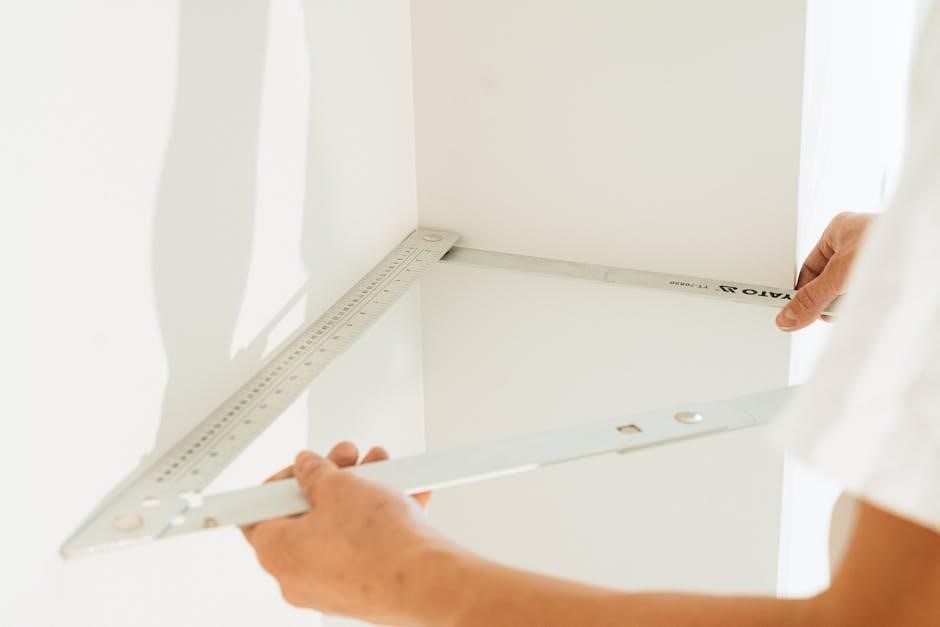
Volumetric pipettes are favored when utmost accuracy is needed‚ as they are calibrated to deliver a specific volume when filled to the calibration mark. Graduated pipettes‚ while versatile‚ may offer slightly less precision than volumetric pipettes. When working with acids‚ it is important to select pipettes made from materials resistant to chemical attack to prevent contamination and ensure accurate measurements. Proper technique‚ including drawing the liquid to the correct meniscus level and dispensing without leaving residual liquid‚ is essential for accurate results.
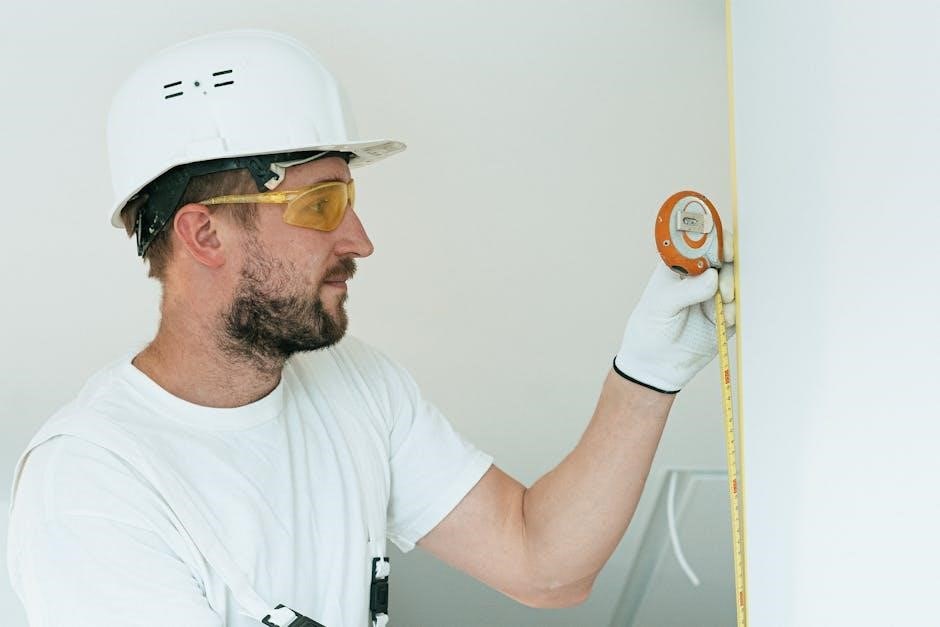
Measuring Cylinders and Volumetric Flasks
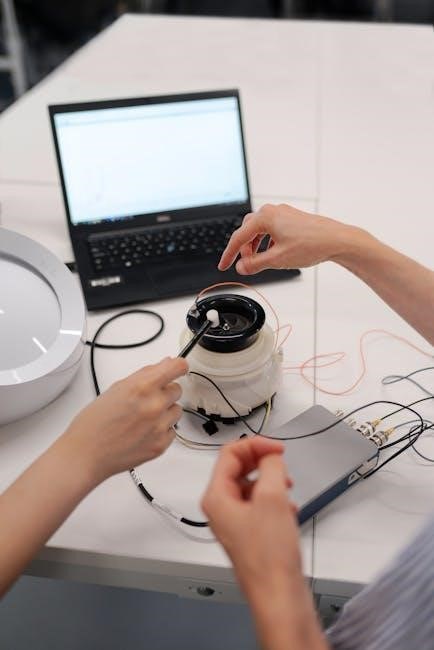
Measuring cylinders and volumetric flasks are essential tools for volume measurement‚ but their applications differ significantly. Measuring cylinders are used for approximate volume measurements when accuracy is not paramount. They are suitable for dispensing reagents where a slight excess is acceptable‚ such as adding acid to a reaction mixture where the exact amount is not critical‚ prioritizing speed. These cylinders come in various sizes‚ providing flexibility for different volume requirements.
Volumetric flasks‚ on the other hand‚ are designed for preparing solutions of precise concentrations. They have a single calibration mark for a specific volume and are used to dilute a solute to a known volume. When working with acids‚ volumetric flasks are crucial for creating standard solutions used in titrations or reactions requiring precise molarity. The choice between a measuring cylinder and a volumetric flask depends on the required accuracy.
Equipment Selection Based on Acid Concentration and Type
Selecting the appropriate equipment for measuring acid volumes hinges on the acid’s concentration and chemical properties. Concentrated acids demand equipment constructed from chemically resistant materials like borosilicate glass or specific plastics to prevent corrosion. The concentration dictates the required precision; highly concentrated acids necessitating accurate measurement tools like burettes or volumetric pipettes for reliable results.
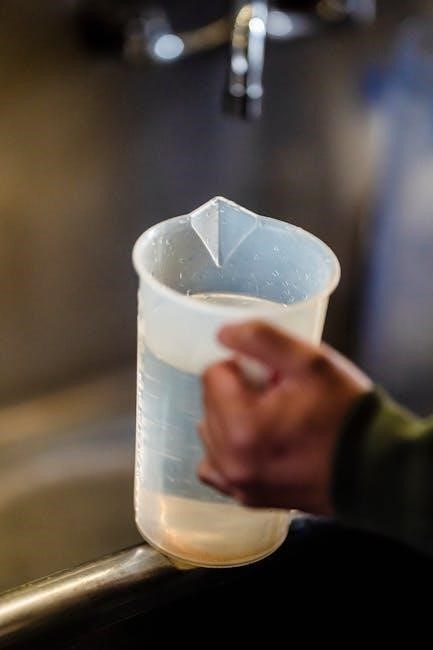
The type of acid also influences equipment selection. Hydrofluoric acid‚ for instance‚ necessitates specialized plasticware‚ as it etches glass. The equipment’s material must withstand the corrosive nature of the specific acid to ensure accurate measurements and prevent damage or contamination. Considering both concentration and type is paramount for safe and precise acid handling.
Calibration and Maintenance of Volume Measuring Equipment
Calibration and maintenance are crucial for ensuring the accuracy of volume measuring equipment used with acids. Regular calibration verifies that the equipment delivers the intended volume. This process typically involves comparing the measured volume to a known standard‚ such as a certified weight or a calibrated volumetric standard.
Maintenance involves cleaning the equipment thoroughly after each use to prevent contamination and buildup of residues. Inspecting the equipment for damage‚ such as cracks or chips‚ is also essential. Proper storage in a clean and dry environment prevents degradation of materials and ensures reliable performance over time. Consistent calibration and diligent maintenance are vital for accurate acid measurements.
Safety Precautions When Using Acid Measuring Equipment

When handling acids and using volume measuring equipment‚ several safety precautions must be followed to prevent accidents and injuries. Always wear appropriate personal protective equipment (PPE)‚ including gloves‚ safety goggles‚ and a lab coat‚ to protect skin and eyes from acid exposure. Work in a well-ventilated area or use a fume hood to avoid inhaling acid vapors‚ which can be corrosive and harmful.
Ensure that all equipment is clean and in good working condition before use. When measuring acids‚ use appropriate techniques to prevent spills and splashes. Always add acid to water slowly to avoid heat generation and potential splattering. Dispose of acid waste properly according to established safety protocols. Familiarize yourself with the safety data sheet (SDS) for each acid used‚ understanding its hazards and first aid measures.
Factors Affecting Accuracy of Volume Measurement
Several factors can influence the accuracy of volume measurements when working with acids. Temperature variations can cause expansion or contraction of both the acid and the measuring equipment‚ leading to inaccurate readings. Parallax error‚ caused by improper eye positioning when reading the meniscus‚ can also introduce inaccuracies. Calibration errors in the equipment‚ such as burettes or pipettes‚ can significantly affect the precision of measurements; therefore‚ calibration is crucial.
The cleanliness of the glassware is another important consideration‚ as residues can alter the volume of acid dispensed. Air bubbles in pipettes or burettes can also lead to errors. The viscosity and surface tension of the acid can affect how it adheres to the glassware‚ potentially influencing the accuracy of the volume delivered. Ensuring proper technique and calibrated equipment is crucial for precise acid volume measurements.

Applications of Precise Volume Measurement in Acid-Related Processes
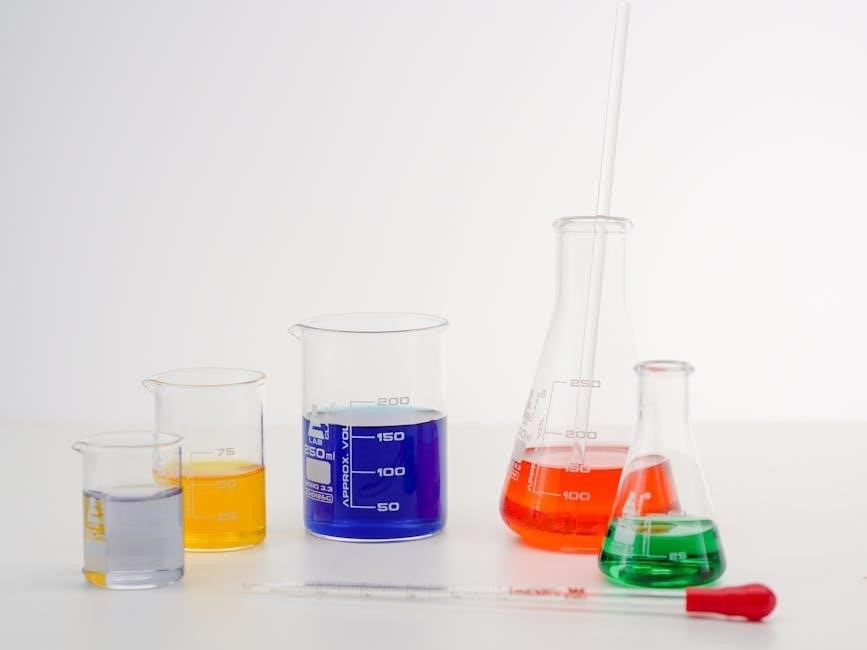
Precise volume measurement is paramount in various acid-related processes across diverse fields. In chemical titrations‚ accurately measuring acid volumes is crucial for determining the concentration of unknown substances‚ ensuring reliable analytical results. Pharmaceutical manufacturing relies heavily on precise acid measurements to control reaction stoichiometry and achieve desired product yields and purity. Acid etching processes in microfabrication depend on accurate volume dispensing for consistent and reproducible results.
In environmental monitoring‚ precise acid volumes are essential for sample preparation and analysis‚ ensuring compliance with regulatory standards. Research and development activities often involve precise acid dilutions and reactions‚ requiring accurate volume measurements for data reliability and reproducibility. Battery manufacturing and acid-based catalyst preparation also necessitate precise volume control. Ultimately‚ accurate volume measurement ensures safety‚ efficiency‚ and accuracy in diverse acid-related applications.

Digital Measurement Devices for Acid Volumes
Digital measurement devices are revolutionizing acid volume determination‚ offering enhanced precision and efficiency. Electronic burettes provide highly accurate dispensing with digital readouts‚ minimizing human error in titrations. Digital pipettes deliver precise volumes with programmable settings‚ ensuring consistency in sample preparation. Automated liquid handling systems offer high-throughput dispensing of acids‚ streamlining workflows in research and industry. These systems can be programmed to deliver specific volumes‚ improving experiment repeatability.
Digital density meters provide accurate acid concentration measurements based on density‚ enabling real-time monitoring. Online monitoring systems use sensors to continuously measure acid volumes in industrial processes‚ allowing for automated control and optimization. These devices contribute to improved safety by reducing manual handling of acids. Digital refractometers are used to measure the refractive index of acid solutions‚ which is directly related to the concentration. Digital measurement devices enhance accuracy‚ efficiency‚ and safety in handling and measuring acid volumes.
Leave a Reply
You must be logged in to post a comment.